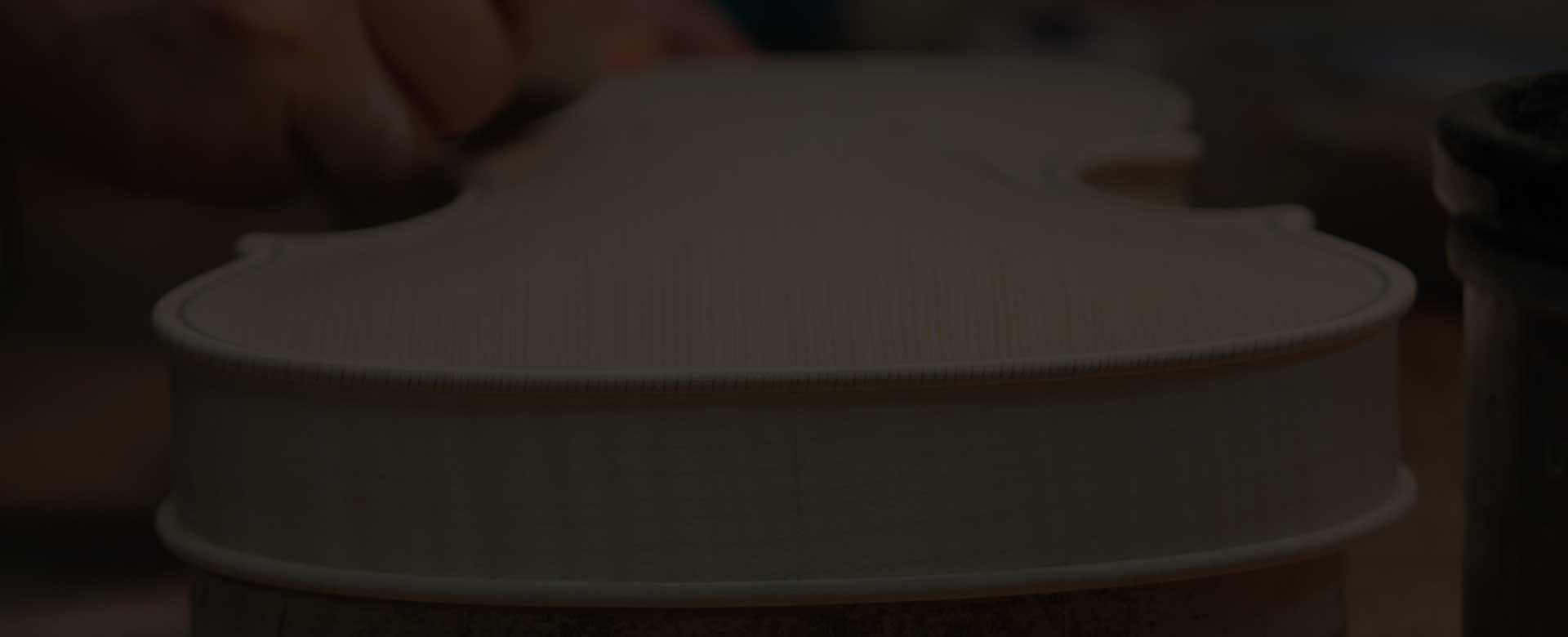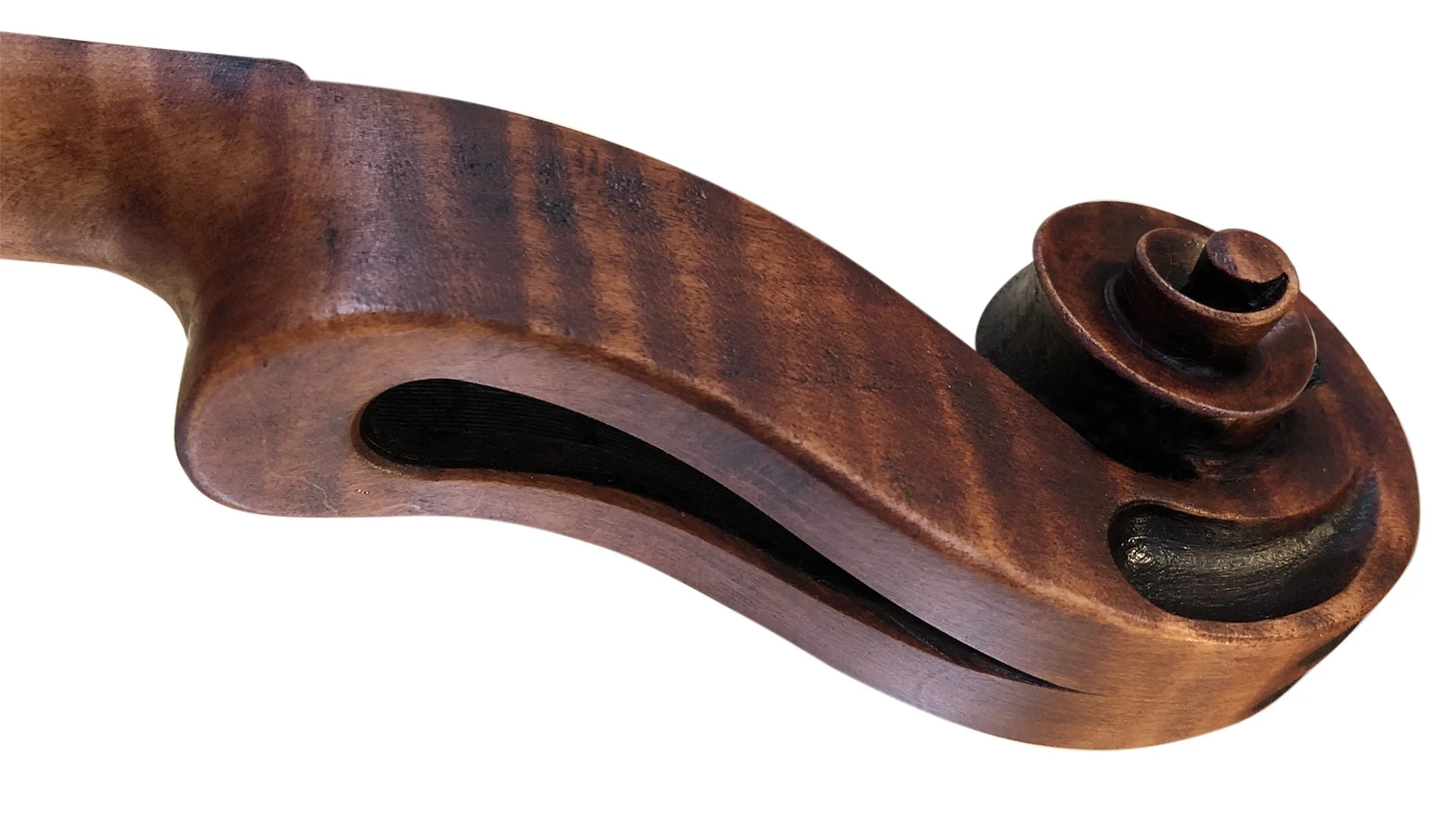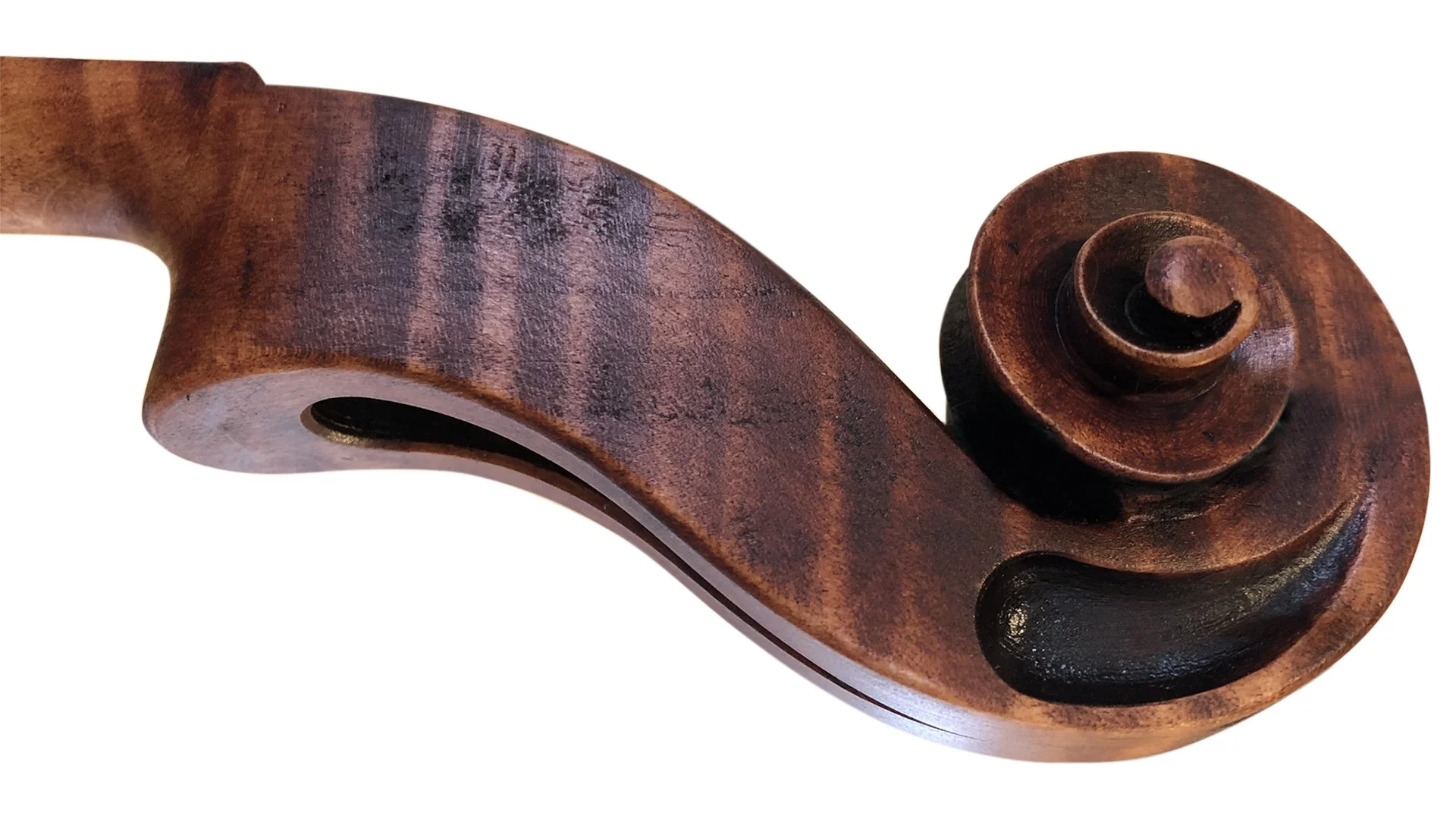
Back to the future - New paths for the viola scroll
When we ask teachers about their biggest concern with student violas, we typically hear about the C string. But when we watch students play viola, and struggle to find an appropriate shoulder rest and/or chin rest, the weight of the instrument often stands out as another problem. “It’s so heavy” we hear students say. “I can’t keep my viola up,” or “my neck hurts,” “my shoulder hurts.” What if….
What if we could make the viola lighter? Can we lighten the weight of the sizes we use for pre-teens and early teens whose bone structures have not fully matured?
The body of the viola has limited potential for weight loss. The dimensions needed to produce the lower tones typically have a certain amount of mass. We can make the arching higher, or the lower bouts wider, but we still have a certain amount of material. When we use less dense wood, we compensate by graduating thicker plates. For students who are looking for larger sizes to access better sound and response from the C string, the weight issue becomes even more pressing. Teachers struggle with decisions between sound and size.
The most accessible route to a “lighter” viola may lay in the scroll. The scroll is the farthest distance from our neck. The weight of the scroll, like the head of a bow, can shift the balance point of the instrument further out from our shoulder, causing the instrument to “feel” heavier under our chin. Historically, scrolls have been carved in different designs for aesthetic purposes. We have seen carved heads, carved peg boxes, and even the backs of the peg boxes carved out of string instruments. On the viola, we can combine aesthetics with an ergonomic improvement. We can remove more of the scroll material to lighten the overall weight of the instrument, and potentially shift the balance of the instrument slightly back towards our shoulder.
The idea is not new. Modern makers have already started experimenting with lighter-weight scrolls for larger violas. The time and expense of producing these scrolls limit their availability. We would like to test the theory more broadly. The V. RICHELIEU™ instruments will introduce a lighter weight scroll for the 15” and 16” violas this summer. If the feedback is positive, we’ll reach out to younger violists for design ideas for the fractional violas. A respected Italian violin maker recently commented to us on the relative lack of creativity in contemporary making. We suspect the younger players will be able to help us develop a creative solution to the scrolls on their instruments. All aspects of violin and viola design represent a fusion of visual aesthetic and practical functional solutions. Our team at V. RICHELIEU™ Is constantly seeking creative advancements so that we can solve problems, like heavy scrolls, while respecting the tradition of violin making.


